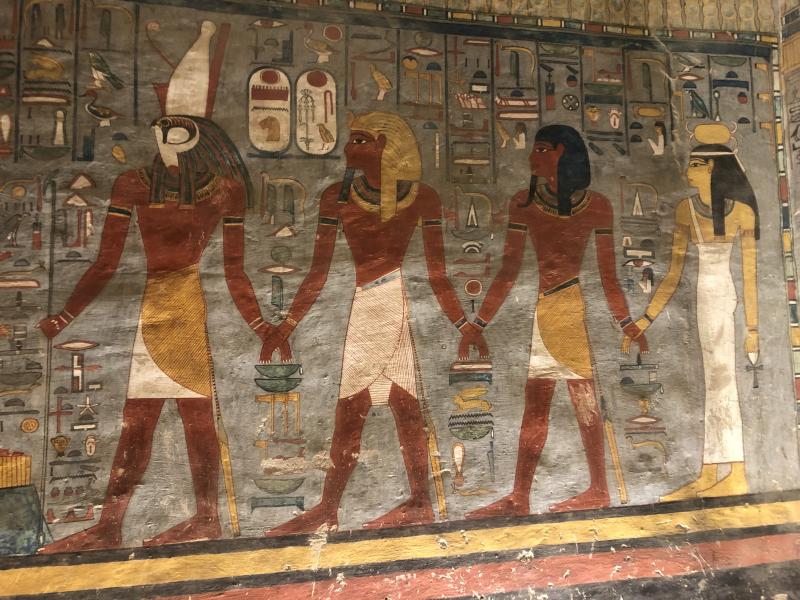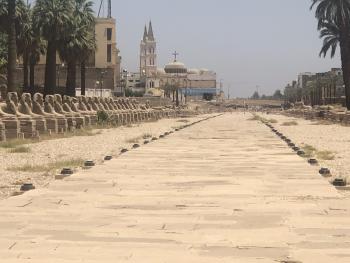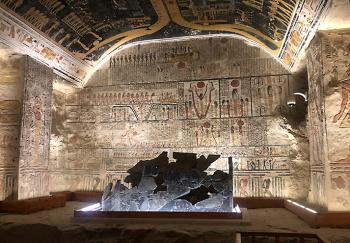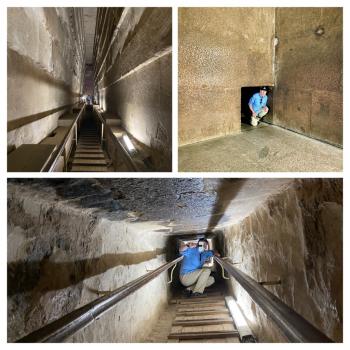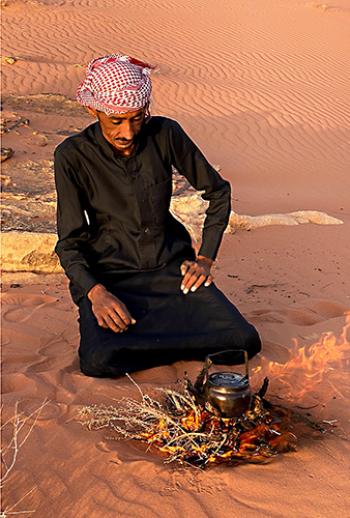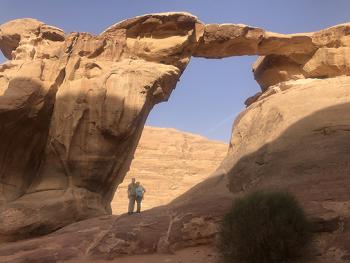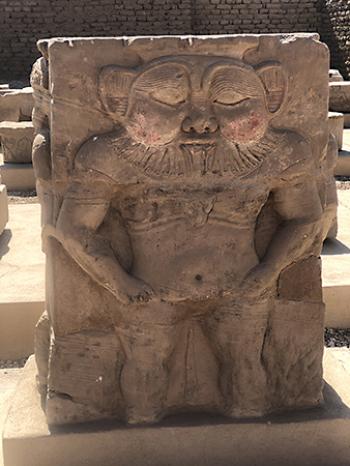Egypt and Jordan with Native Eye Travel
This item appears on page 10 of the August 2021 issue.
In March 2021, after being cooped up for 12 months and knowing our vaccination regimen would be completed the beginning of April, my wife, Susan, and I were ready to spread our wings and take flight. The question was “Where?”
Our first step was to contact a good friend, Jim O’Brien, owner of Native Eye Travel (Brantham, Suffolk, England; phone +44 1473 328546, www.nativeeyetravel.com), who has worked with us in the past, but many of his scheduled small-group tours didn’t match when we wanted to travel, which was NOW!
I asked Jim if he booked trips to Egypt and/or Jordan, which have always been on our list of countries to visit and which were among the countries open to American travelers. Although he didn’t have any standard tours, he said he used to live in Egypt and would be excited to help us plan a custom tour.
Our tour, which started in Cairo on April 21, cost £6,850 total for both of us. Adding a 2% credit card convenience fee, that worked out to $9,684. This covered regional flights, all lodging, breakfasts, some dinners, guides/drivers, airport transfers and entrance fees. Our tour description specifically said that tipping was not included in the price.
Jim indicated that before we could enter Jordan, we would have to show proof of medical insurance covering Covid-19. We checked our annual travel insurance policy with Allianz Global Assistance (866/884-3556, www.allianztravelinsurance.com) and found that they had added benefits to include the accommodation of claims for emergency medical care and/or transportation for insureds who became ill with COVID-19 while traveling.
We used United MileagePlus miles, flying on Lufthansa from Washington Dulles airport through Frankfurt to Cairo. Prior to our flight, we each took our first-ever PCR test ($75 each), at a local clinic that promised results in 16 hours. We took the tests on April 20 at 8 a.m. and received our results (negative for COVID) via email at 10:42 p.m.
•
In Egypt, we soon discovered that everyone wanted to provide a service (carry our luggage, take our picture, point out tomb artwork) that required a tip.
We quickly learned the Arabic phrase “La,” or “No,” but we also learned “Shukran,” or “Thank you.” (When wanting to tip, we never seemed to have enough small bills, as ATMs only spit out bills in larger denominations.)
“La” also was very useful in stopping the numerous vendors trying to sell trinkets, though it was not easy balancing the desire to help locals deal with the severe loss of income from the lack of visitors with the overwhelming number of men trying to sell us objects we had no need for.
One thing we noticed everywhere was the small number of tourists. The Great Pyramid of Giza used to see 15,000 or more visitors a day. During our visit, it was getting fewer than a thousand. At Petra, Jordan, it was the same story — usually thousands a day, but during our visit, maybe several hundred. For us, it was wonderful, but for those depending on tourism income, it is a dire situation.
•
In Egypt, we had two guides: SemSem (t.g.sam.sam@gmail.com), for Cairo, who has been recognized as one of the best guides in the world, and his friend Albert, for Luxor and the Nile. Both are Egyptologists and shared with us a wealth of knowledge.
I could fill a whole issue of ITN talking about what we saw in Egypt alone, but here are just a few highlights.
The Valley of the Kings — Our entry tickets allowed us to visit three tombs, and we were particularly impressed by the tomb of Ramesses VI. The colors of the paintings and hieroglyphics seemed as if they were painted the day before.
The Great Pyramid (Pyramid of Cheops) — We were able to enter the pyramid and climb up to the king’s vault there. I wouldn’t recommend this if you are claustrophobic or if the place is crowded, but I’m not and it wasn’t.
National Museum of Egyptian Civilization — Fortunately, after being closed due to COVID, it opened up five days before our arrival. If you saw news articles on April 3 about the “mummy parade” in Cairo, well, this is their new home.
Egyptian Museum — I sometimes roll my eyes about museums. Not here.
City of Alexandria — At its location on the shores of the Mediterranean, we visited its catacombs and Fort Qaitbey. Unfortunately, thanks to Covid, we were only able to visit the exterior of the Alexandria Library.
Of course, our Nile cruise — on which we traveled through one set of locks and visited the Dendera Temple Complex, the Temple of Horus at Edfu, the Temple of Haroeris and Sobek at Kom Ombo and the Temple of Philae on Aswan’s Agilkia Island — was also notable. And I will always remember hearing the overlapping calls to evening prayer from the many different mosques that dotted the shoreline.
•
Before flying on to Amman, Jordan, Susan and I each needed another PCR test. We got them at a Cairo hospital (EGP3,000, or $192, for both of us), and I was amazed that we got the results in three hours.
We flew to Amman the next day, but we needed yet another PCR test at the Amman airport after landing and before clearing Immigration. (We had to schedule and pay for this test online before boarding our flight in Cairo, costing the both of us $82). However, we didn’t have to quarantine and never heard back about the results of that test.
As I did for Egypt, I will just list some of my favorite places in Jordan.
Petra — All of the tourist brochures show a picture of the Treasury, probably built in the 1st century AD, but there is so much more there. We had a guide who took us through the main part of the site in about three hours, then we spent another two hours walking on our own and climbing the 800 stairs to Ad Deir (the Monastery). At the end of the day, I might have looked worn out, but I was extremely happy!
Wadi Rum — This location is reminiscent of an amazing moon or Mars landscape. After waiting a couple of hours for a sandstorm to subside, we took a 4-hour jeep ride, enjoying a tea ceremony at sunset.
Jerash — We spent several hours exploring this very-well-preserved Greco-Roman city.
Little Petra — You can’t have 1,000 camels walking through the main city, so Little Petra was where the caravans stayed when traders visited the main city of Petra.
The one slight disappointment we had in Jordan was that our trip coincided with Ramadan, and, due to Covid restrictions, there was a nightly curfew, thus there was little chance to experience the local cuisine.
•
Some final notes —
After we arrived in Egypt, the US State Department issued a “Do Not Travel” advisory, due to Covid, for Egypt and Jordan. For the whole trip we wore masks, except when eating or outside. We also maintained social-distancing protocols as much as we could.
In Egypt, we saw some people complying with restrictions while others wore no masks or had them under their chins, but in Jordan, there seemed to be much more compliance with directives.
We used American Airlines miles to fly home on Qatar Airways, via Doha, after getting one final PCR test at a drive-through testing clinic in Jordan (JOD50, or $71, for the both of us).
Looking back on our trip, it’s hard to get my head around the ages of many of the spectacular sites we visited. I am disappointed in myself for not having visited these countries sooner, as they are so special.
NORMAN DAILEY
Alexandria, VA

